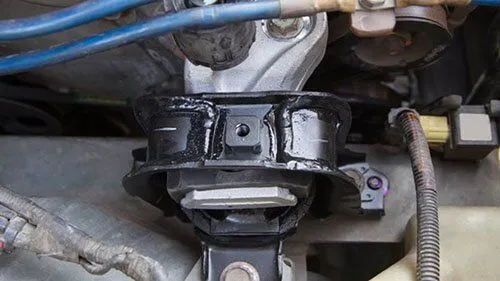When it comes to maintaining your vehicle’s performance and comfort, engine mounts play a vital role. These components are responsible for securing the engine to the chassis while dampening vibrations that would otherwise transfer into the cabin. Over time, engine mounts can wear out, leading to increased noise, vibration, and misalignment issues. When replacement becomes necessary, vehicle owners often face a common dilemma: Should you go for OEM (Original Equipment Manufacturer) or aftermarket engine mounts?
Both options have their merits and drawbacks. The right choice depends on your vehicle, budget, driving style, and expectations. In this article, we’ll explore the differences between OEM and aftermarket engine mounts, helping you make an informed decision that suits your needs.
What Are OEM Engine Mounts?
OEM stands for Original Equipment Manufacturer. These engine mounts are made by the same company that produced the original parts for your vehicle. Essentially, they are identical to the parts that came with your car when it rolled off the assembly line.
Pros of OEM Engine Mounts:
- Guaranteed Compatibility: OEM mounts are designed specifically for your vehicle make and model, ensuring a perfect fit.
- Reliable Quality: Since OEM parts meet factory standards, you can expect consistent durability and performance.
- Warranty Protection: Most OEM parts come with a manufacturer’s warranty, offering peace of mind in case of defects or premature failure.
Cons of OEM Engine Mounts:
- Higher Cost: OEM engine mounts are typically more expensive due to their brand affiliation and quality control.
- Limited Availability: Depending on your vehicle’s age or manufacturer, OEM parts may be harder to find or require ordering directly through a dealership.
What Are Aftermarket Engine Mounts?
Aftermarket engine mounts are produced by third-party manufacturers not affiliated with your vehicle’s brand. These mounts are made to fit a wide range of vehicles and are often available in various materials and performance specifications.
Pros of Aftermarket Engine Mounts:
- Affordability: Aftermarket options are generally more budget-friendly than OEM parts.
- Variety of Choices: You can select mounts based on material (e.g., rubber, polyurethane, solid) or performance level.
- Readily Available: These parts are widely distributed through local auto parts stores and online suppliers.
Cons of Aftermarket Engine Mounts:
- Quality Variation: Not all aftermarket mounts meet the same standards, which means quality and performance can vary significantly between brands.
- Potential Fitment Issues: Some mounts may not fit as precisely as OEM, especially on older or specialized vehicles.
- Lack of Warranty: While some reputable aftermarket brands offer warranties, many do not.
Key Differences Between OEM and Aftermarket Engine Mounts
| Feature | OEM Mounts | Aftermarket Mounts |
|---|---|---|
| Fit and Compatibility | Exact match to factory specs | May vary slightly by manufacturer |
| Cost | Generally higher | Typically more affordable |
| Quality Control | Strict factory standards | Varies based on brand |
| Material Options | Usually standard rubber | Rubber, polyurethane, or solid |
| Availability | Dealerships or authorized dealers | Widely available online or in stores |
| Performance Tuning | Standard vehicle performance | Options for high-performance needs |
Which One Should You Buy?
Choosing between OEM and aftermarket engine mounts comes down to your specific situation. Here are some factors to consider:
- Daily Driving or Commuting: If your vehicle is primarily used for commuting or everyday errands, OEM mounts may be a better choice for long-term reliability and comfort.
- Budget Constraints: If cost is a significant factor and you’re working with a limited budget, high-quality aftermarket mounts can offer a reasonable alternative—just ensure you choose a reputable brand.
- Performance Needs: Enthusiasts or those using their vehicle for racing or towing might benefit from aftermarket mounts with upgraded materials like polyurethane or solid aluminum, which offer enhanced support and reduced engine movement.
- Age of the Vehicle: For older vehicles or discontinued models, finding OEM parts can be difficult. In such cases, aftermarket mounts may be your only practical option.
Tips for Buying the Right Engine Mount
- Research the Brand: Not all aftermarket manufacturers are equal. Look for companies with positive customer reviews and proven track records.
- Verify Compatibility: Always double-check that the mount is compatible with your specific vehicle make, model, and engine size.
- Material Selection: Choose a material based on your driving needs. Rubber offers comfort, while polyurethane and solid mounts are more performance-oriented.
- Professional Installation: Regardless of your choice, proper installation is crucial. Misaligned mounts can lead to severe engine and drivetrain issues.
Final Thoughts
Whether you choose OEM or aftermarket engine mounts, the key is to prioritize fitment, durability, and driving needs. OEM mounts offer the peace of mind of factory-spec quality, while aftermarket options provide flexibility and potential cost savings. By evaluating your priorities—whether it’s performance, comfort, or price—you can make a confident decision that keeps your vehicle running smoothly for miles to come.

